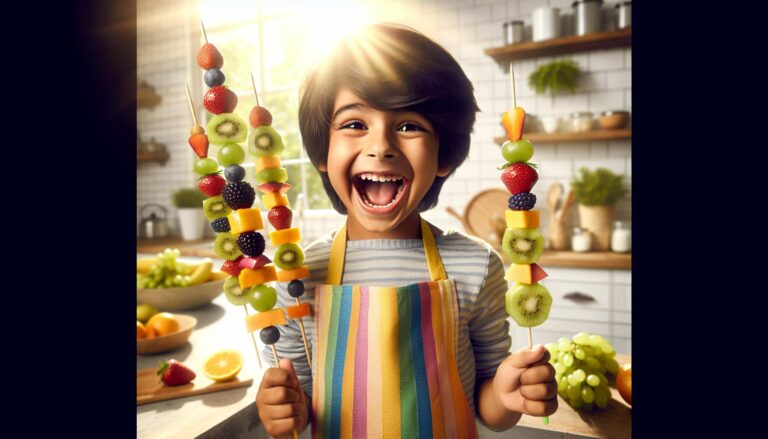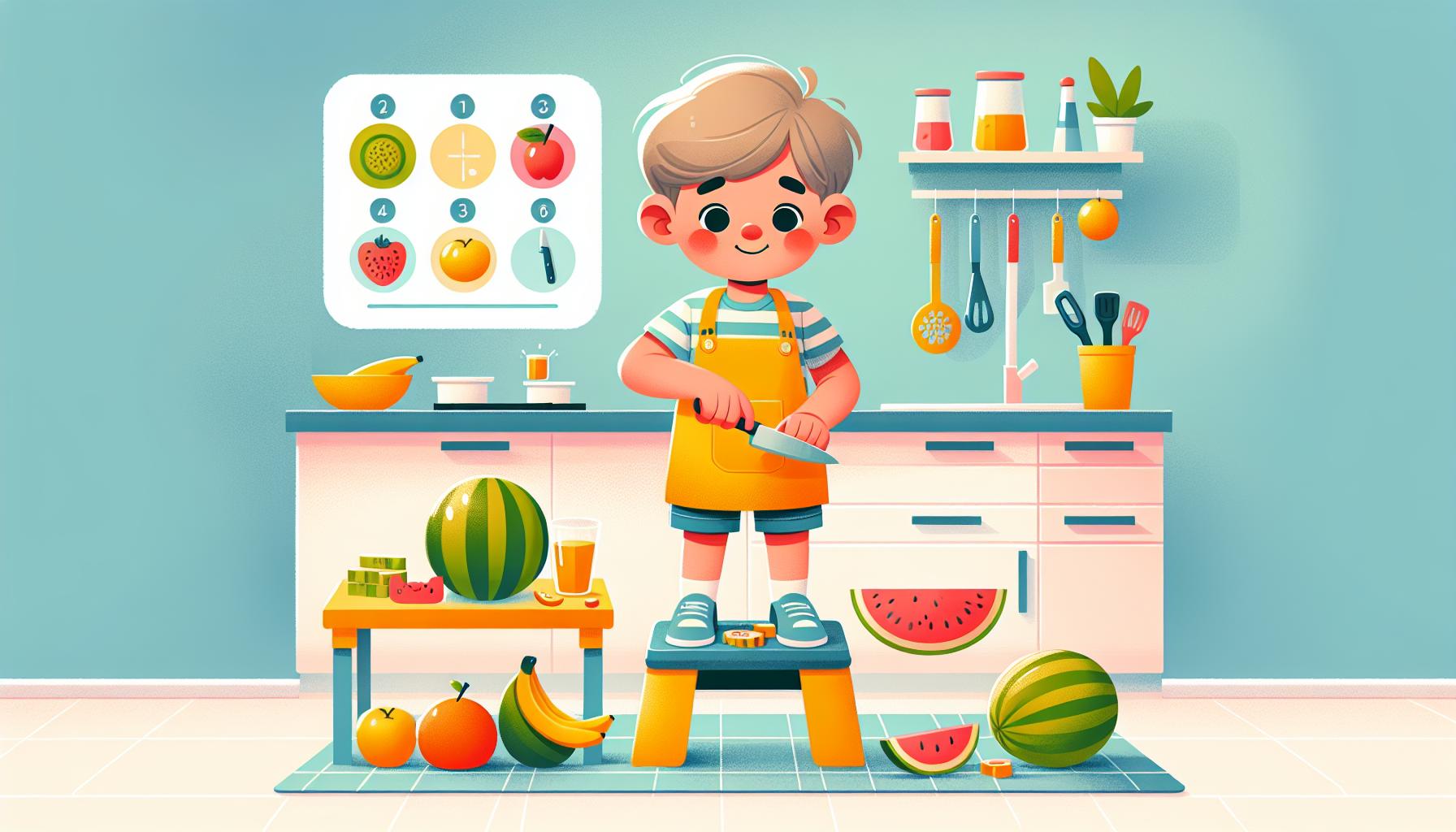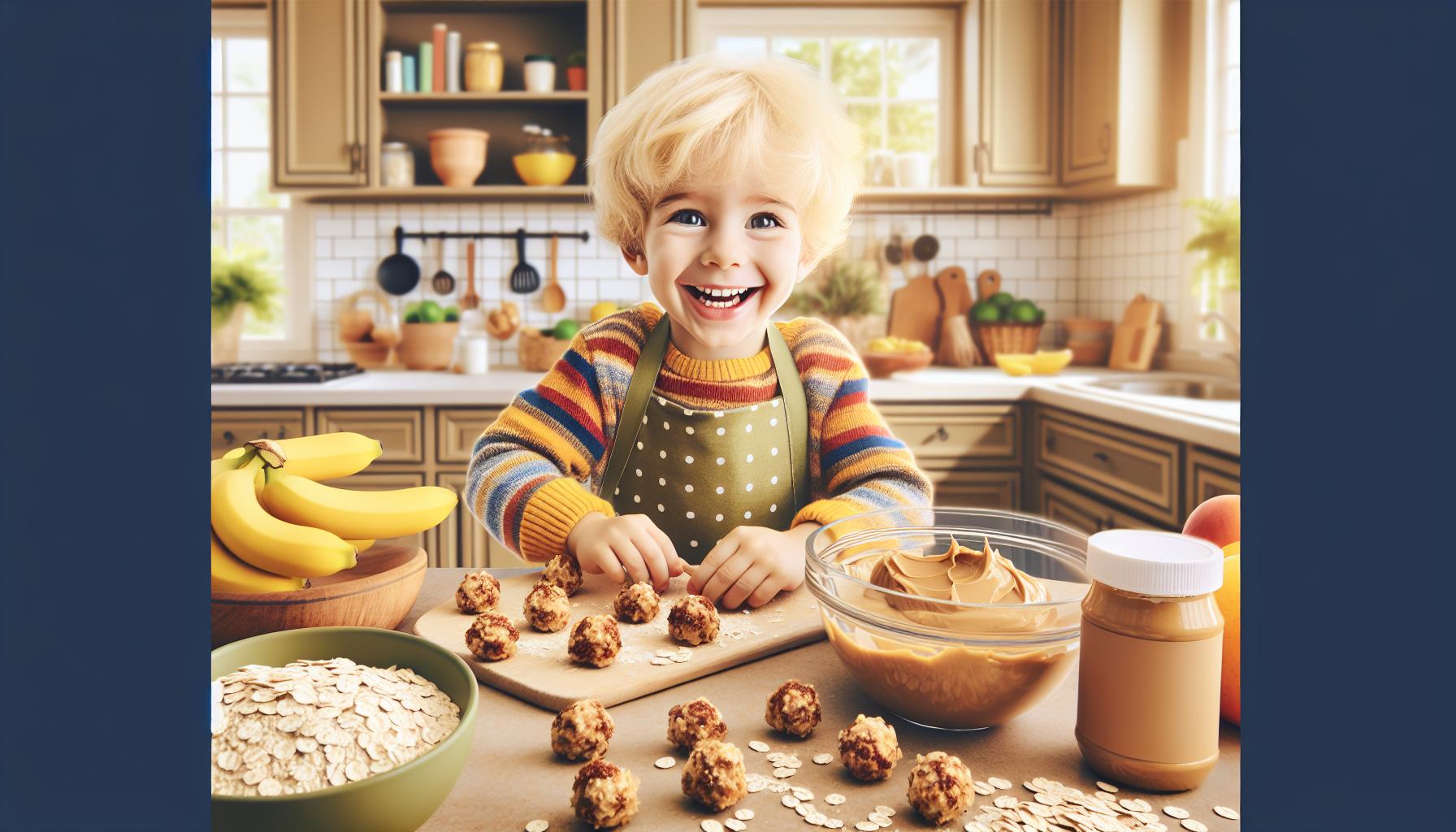
Getting kids excited about healthy eating can be a challenge but teaching them to make their own nutritious snacks is a game-changer. We’ve found that children who participate in food preparation are more likely to try new ingredients and develop positive relationships with healthy eating habits.
Looking for ways to keep your little ones occupied while fostering independence in the kitchen? We’ll share simple yet delicious snack recipes that kids can prepare with minimal adult supervision. From fruit kabobs to yogurt parfaits these fun and creative treats will help develop their cooking skills and confidence. Plus they’ll learn valuable lessons about nutrition that’ll last a lifetime.
Key Takeaways
- Involving kids in snack preparation increases their likelihood of trying new foods and developing healthy eating habits
- Children develop essential life skills through making snacks, including kitchen safety, independence, nutritional awareness, and time management
- Age-appropriate kitchen tools and constant supervision are crucial for keeping young chefs safe in the kitchen
- No-bake energy bites and creative fruit/veggie presentations are perfect starter recipes for kids to make independently
- Protein-rich snacks like trail mix and yogurt parfaits teach portion control and measuring skills
- Simple smoothie recipes help children learn about blending ingredients while creating nutritious drinks
Why Kids Should Learn to Make Their Own Snacks
Teaching kids to prepare their own snacks develops essential life skills that extend beyond the kitchen. Here’s how snack-making empowers children:
Independence & Confidence
- Making decisions about ingredient choices
- Following simple recipes independently
- Learning from mistakes in a safe environment
- Creating successful outcomes builds self-esteem
Kitchen Safety & Responsibility
- Understanding basic food handling practices
- Learning to wash hands before food preparation
- Using age-appropriate kitchen tools safely
- Cleaning up workspace after snack making
Nutritional Awareness
- Reading food labels increases understanding
- Distinguishing between healthy and less healthy options
- Learning about portion control naturally
- Recognizing different food groups
Time Management
- Planning snack preparation between activities
- Understanding prep time requirements
- Organizing ingredients before starting
- Developing multi-step process skills
Math & Science Skills
| Skill Type | Examples |
|---|---|
| Math | Measuring ingredients, counting items, halving recipes |
| Science | Observing food changes, mixing ingredients, temperature effects |
- Sharing creations with family members
- Teaching siblings how to make snacks
- Building communication skills through recipe following
- Developing teamwork through kitchen collaboration
Kids who master snack preparation gain practical experience while developing critical thinking abilities. Creating their own snacks encourages healthy eating habits through hands-on learning experiences.
Kitchen Safety Rules for Young Chefs

Teaching children kitchen safety creates confident young chefs who understand safe food preparation practices. Let’s explore essential safety guidelines for kids in the kitchen.
Age-Appropriate Kitchen Tools
Kids learn best with tools designed for their age and skill level. Here are safe options for young chefs:
- Plastic knives for ages 3-6: Cut soft fruits like bananas or melon
- Safety scissors for ages 4-7: Snip herbs or green onions
- Butter knives for ages 6-8: Spread nut butter or cream cheese
- Small cutting boards with non-slip grips for all ages
- Measuring cups with large handles for easy gripping
- Child-sized mixing bowls with rubber bottoms
- Wooden spoons and silicone spatulas
- Wash hands with soap for 20 seconds before touching food
- Pull back long hair in a ponytail or hair tie
- Wear a clean apron to protect clothes
- Clean all surfaces before and after food prep
- Keep raw foods separate from ready-to-eat items
- Use separate cutting boards for different food types
- Store perishable snacks at proper temperatures
- Check expiration dates on ingredients
| Age Group | Recommended Supervision Level | Appropriate Tasks |
|---|---|---|
| 3-5 years | Constant supervision | Washing fruits, mixing, measuring |
| 6-8 years | Direct supervision | Simple cutting, spreading, assembly |
| 9-12 years | Nearby supervision | Basic appliance use, more complex prep |
No-Bake Energy Bites and Balls

Energy bites pack wholesome ingredients into convenient, bite-sized snacks that kids love making and eating. These simple recipes require zero baking and minimal adult supervision.
Peanut Butter Banana Bites
These protein-rich bites combine three basic ingredients: ripe bananas, peanut butter, and rolled oats. Kids start by mashing 2 bananas in a bowl, then mix in ¾ cup peanut butter and 1½ cups oats. They roll the mixture into 1-inch balls and place them on a lined baking sheet. Pop the sheet in the freezer for 30 minutes until firm. Mix-in options include:
- Dark chocolate chips for antioxidants
- Chia seeds for omega-3 fatty acids
- Chopped nuts for extra protein
- Dried cranberries for natural sweetness
Oatmeal Power Balls
Oatmeal power balls offer a nutritious blend of complex carbohydrates and healthy fats. The base recipe combines:
| Ingredient | Amount |
|---|---|
| Rolled oats | 1 cup |
| Honey | ⅓ cup |
| Almond butter | ½ cup |
| Ground flaxseed | 2 tablespoons |
| Mini chocolate chips | ¼ cup |
Kids mix ingredients in a large bowl until well combined. They refrigerate the mixture for 15 minutes to make it easier to handle. Then they roll into 12-15 small balls. Creative additions include:
- Shredded coconut coating
- Crushed freeze-dried fruit
- Sunflower seeds
- Cinnamon or vanilla extract
Store both varieties in an airtight container in the refrigerator for up to 5 days.
Fun Fruit and Veggie Creations
Creative fruit and vegetable presentations transform ordinary healthy snacks into exciting treats kids love to make and eat. These simple recipes encourage children to experiment with colors textures while developing their artistic skills.
Rainbow Fruit Kabobs
Rainbow fruit kabobs let kids practice pattern-making while creating nutritious treats. Children arrange colorful fruit pieces on wooden skewers in rainbow order:
- Red: strawberries raspberries watermelon
- Orange: mandarin segments cantaloupe
- Yellow: pineapple chunks mango pieces
- Green: green grapes kiwi slices
- Blue/Purple: blueberries purple grapes
Kids can thread 4-5 fruit pieces per skewer using plastic skewers for younger children. The fruit combinations change based on seasonal availability giving children chances to try new fruits throughout the year.
Veggie Faces with Hummus
Veggie faces turn plain vegetables into playful edible art projects. Kids start with a round plate spread with hummus as the “canvas” then design faces using:
- Cucumber rounds for eyes
- Cherry tomatoes for noses
- Bell pepper strips for mouths
- Shredded carrots for hair
- Celery sticks for eyebrows
- Broccoli florets for ears
The smooth hummus helps vegetables stick in place while adding protein. Children mix different vegetables to create unique expressions ranging from silly smiles to surprising expressions. This activity introduces new vegetables in an engaging way that makes healthy snacking fun.
| Age Group | Recommended Prep Tasks |
|---|---|
| 3-5 years | Arrange pre-cut pieces |
| 6-8 years | Thread soft fruits break florets |
| 9+ years | Cut soft fruits vegetables |
Easy Protein-Packed Snacks
Creating protein-rich snacks helps kids stay energized throughout the day. These simple recipes let children practice their kitchen skills while making nutritious treats.
Trail Mix Combinations
Trail mix offers endless possibilities for customization with protein-packed ingredients. Kids mix and match their favorite nuts (almonds, cashews, walnuts) with dried fruits (raisins, cranberries, apricots) in small ziplock bags. Adding pumpkin or sunflower seeds boosts the protein content while dark chocolate chips create a sweet treat. Children measure ingredients using measuring cups, developing math skills as they create personal portions.
| Ingredient | Protein per 1/4 cup |
|---|---|
| Almonds | 8g |
| Pumpkin Seeds | 9g |
| Cashews | 5g |
| Sunflower Seeds | 6g |
Greek Yogurt Parfaits
Greek yogurt parfaits combine protein-rich yogurt with crunchy toppings for a satisfying snack. Kids layer vanilla Greek yogurt with fresh berries, granola and a drizzle of honey in clear cups. Adding chopped nuts or chia seeds increases protein content while providing healthy fats. This activity teaches children about portion control through layering ingredients.
| Ingredient | Protein per serving |
|---|---|
| Greek Yogurt (6 oz) | 17g |
| Chia Seeds (1 tbsp) | 3g |
| Granola (1/4 cup) | 4g |
| Mixed Nuts (2 tbsp) | 6g |
Simple Smoothie Recipes
Smoothies offer a perfect opportunity for kids to experiment with blending different fruits and flavors while creating nutritious drinks. These recipes teach measuring skills and introduce children to the fun of combining healthy ingredients.
Berry Blast Smoothie
Our Berry Blast Smoothie combines frozen mixed berries with Greek yogurt for a protein-rich treat. Kids can measure:
- 1 cup frozen mixed berries (strawberries raspberries blueberries)
- ½ cup plain Greek yogurt
- ½ banana
- ½ cup milk
- 1 tablespoon honey
Kids add ingredients to the blender in order then press the blend button. Adult supervision helps with blender safety. The smoothie serves 2 and stores in the fridge for up to 4 hours.
Green Monster Smoothie
This kid-friendly green smoothie packs spinach nutrients into a sweet tropical drink. The recipe includes:
- 1 cup baby spinach leaves
- 1 ripe banana
- ½ cup mango chunks
- ½ cup pineapple pieces
- ¾ cup apple juice
- ½ cup vanilla yogurt
Little chefs can practice measuring liquids first then add frozen fruits. They’ll watch green spinach transform into a bright smoothie after 30 seconds of blending. This recipe makes 2 servings and teaches color changes during mixing.
- Freeze fruit pieces in advance for thicker smoothies
- Let kids create flavor combinations using 3-4 ingredients
- Add ice cubes for extra chill
- Use rubber-grip blender controls for small hands
- Clean up immediately to prevent sticky spills
Conclusion
Getting kids involved in making their own nutritious snacks is a powerful way to build lifelong healthy eating habits. We’ve shown how simple recipes and creative food preparation can make healthy snacking both fun and educational. These kitchen activities do more than fill hungry tummies – they build confidence develop essential life skills and create lasting memories.
Remember that every child’s journey in the kitchen is unique. As they explore these recipes and develop their culinary skills they’ll discover the joy of creating delicious healthy snacks. Let’s empower our young chefs to take charge of their nutrition one tasty creation at a time.
Frequently Asked Questions
At what age can children start helping in the kitchen?
Children can start participating in kitchen activities as early as age 3, with appropriate supervision. Tasks should be age-appropriate, starting with simple activities like washing fruits or stirring ingredients. As they grow older, they can gradually take on more complex tasks using suitable tools like plastic knives for younger kids and butter knives for older ones.
How can I ensure kitchen safety for my child?
Establish clear safety rules including proper handwashing, hair tied back, and clean workspace maintenance. Provide age-appropriate tools, supervise activities, and teach basic food handling practices. Start with no-cook recipes and gradually introduce more complex tasks as children demonstrate responsibility and understanding of safety guidelines.
What are some easy snacks kids can make independently?
Children can make Peanut Butter Banana Bites, Oatmeal Power Balls, Rainbow Fruit Kabobs, and yogurt parfaits. These no-bake recipes require minimal adult supervision and use simple ingredients. Trail mix combinations and basic smoothies are also great options for independent preparation.
How long can homemade snacks be stored?
Most homemade snacks like Peanut Butter Banana Bites and Oatmeal Power Balls can be stored in an airtight container in the refrigerator for up to five days. Smoothies should be consumed immediately, while trail mix can be stored at room temperature in a sealed container for several weeks.
What skills do children develop through snack preparation?
Children develop multiple skills including measuring (math), understanding food reactions (science), time management, and kitchen safety awareness. They also learn about nutrition, portion control, and food label reading. Additionally, cooking helps build confidence, independence, and communication skills.
How can I make healthy snacks more appealing to kids?
Involve children in the creative process by making snacks visually appealing. Try making Rainbow Fruit Kabobs, creating Veggie Faces with hummus, or designing colorful smoothies. Let them choose ingredients and experiment with different combinations while maintaining nutritional value.
What kitchen tools are safe for children to use?
Safe tools vary by age group. Young children can use plastic knives, measuring cups, and spoons. Older children can graduate to butter knives, vegetable peelers, and hand mixers under supervision. Always ensure tools are appropriate for the child’s skill level and motor development.
How can I teach portion control through snack making?
Use visual guides and measuring tools to teach portion sizes. Parfait layering and trail mix assembly help demonstrate proper portions. Let children practice measuring ingredients and discuss serving sizes while preparing snacks like smoothies and power balls.

